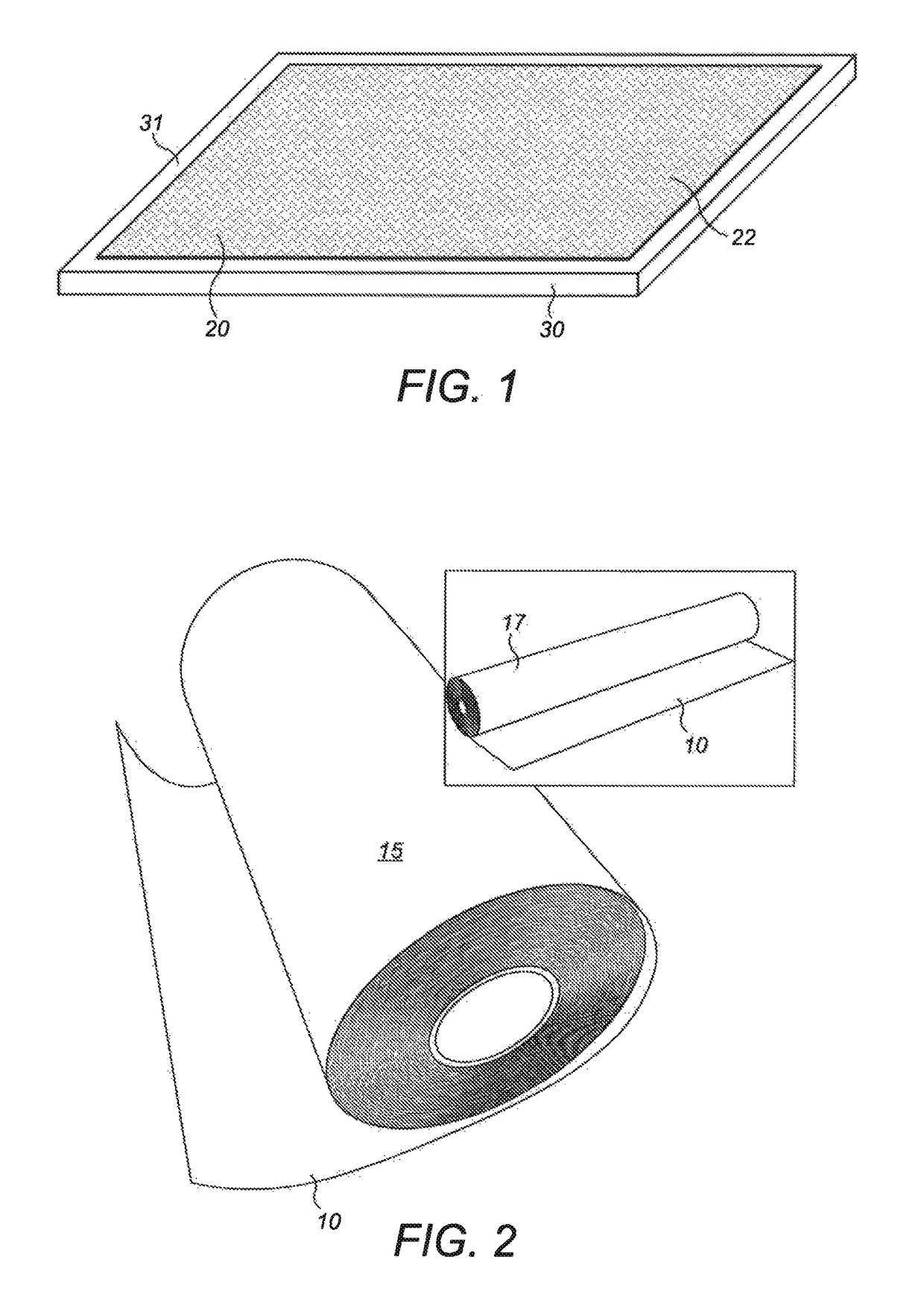Building coverings
a technology for building coverings and building panels, applied in the field of building coverings, to achieve the effect of reducing clothing snags and reducing potential movemen
- Summary
- Abstract
- Description
- Claims
- Application Information
AI Technical Summary
Benefits of technology
Problems solved by technology
Method used
Image
Examples
Embodiment Construction
[0164]FIG. 1 illustrates a wall covering in the form of a tile 30 that forms part of a wall covering system. The tile 30 comprises a rigid body 31. A first component 20 of a hook-and-loop fastener is fixable to the rigid body 31, and in the embodiment illustrated is more specifically shown fixed to the rigid body 31.
[0165]FIG. 2 illustrates a second component 10 of the hook-and-loop fastener that, in use, is fixable to a vertical underlying surface defined by a wall (not shown). In this example, the second component 10 is supported on a backing sheet 17 that is rolled into a roll 15. The backing sheet has a pre-glued undersurface (not shown) that can be fixed to a wall surface.
[0166]In the embodiment shown, the first component 20 is a loop component that comprises a plurality of loop structures and the second component 10 is a hook component that comprises a plurality of hook structures. However, embodiments are also envisaged in which the first component 20 is the hook component an...
PUM
 Login to View More
Login to View More Abstract
Description
Claims
Application Information
 Login to View More
Login to View More - R&D
- Intellectual Property
- Life Sciences
- Materials
- Tech Scout
- Unparalleled Data Quality
- Higher Quality Content
- 60% Fewer Hallucinations
Browse by: Latest US Patents, China's latest patents, Technical Efficacy Thesaurus, Application Domain, Technology Topic, Popular Technical Reports.
© 2025 PatSnap. All rights reserved.Legal|Privacy policy|Modern Slavery Act Transparency Statement|Sitemap|About US| Contact US: help@patsnap.com



